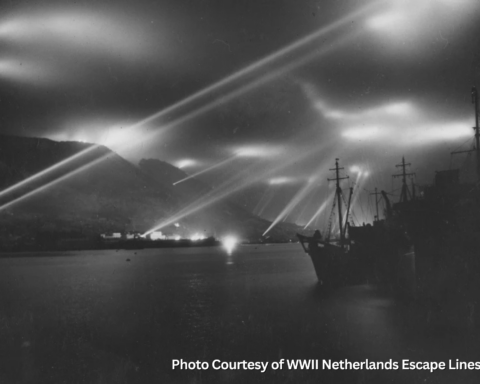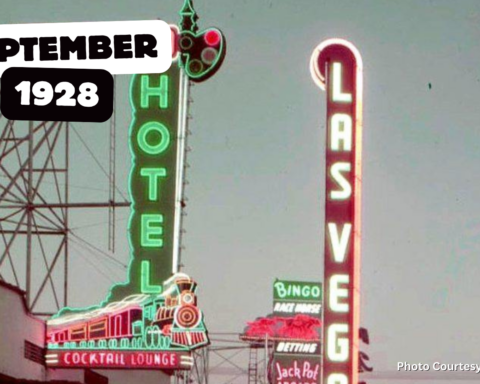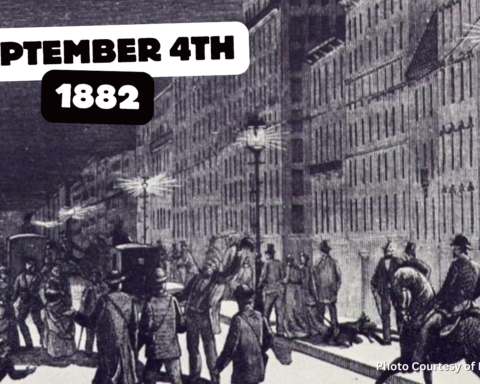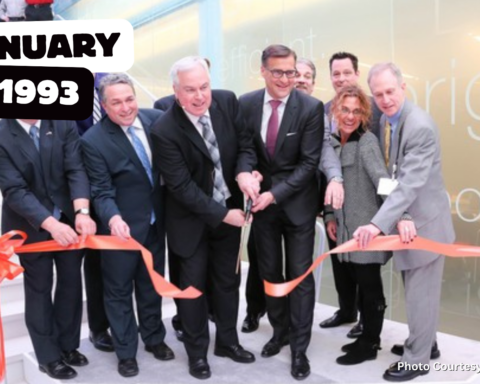The Golden Gate Bridge serves as the iconic symbol of San Francisco, captivating millions of visitors each year with its majesty, beauty and symbol of American ingenuity and craftsmanship.
While it’s stunning orange-red color is undoubtedly eye-catching, it’s the sight of the bridge at night that adds that touch of magic to the stately icon as it grows out of the bay and seemingly stretches into the sky.
Consulting Architect, Irving F. Morrow, wrote the “Report on Color and Lighting’ to Chief Engineer, Joseph B. Strauss, on April 6, 1935. In his report, he indicated that the two most important factors in lighting the Golden Gate Bridge were the enormous size and scale of the project and the dignity that needed to be given to it. Morrow carefully weighed these considerations as he designed his lighting scheme, one which would even further accent the uniqueness of the Golden Gate Bridge.

During construction, and as the bridge towers began to rise, Morrow was commuting to the construction site from his home in the East Bay via ferry. This gave him a unique visual perspective and allowed him to easily see the importance of the bridge fitting into the surrounding landscape. He wanted the bridge to compliment the existing hills, but also to provide contrast to the other elements of the landscape such as the sky, sea, and cityscapes. That’s how he fixed on the unique orange color. His lighting design needed to compliment the color palate.
Because of the Bridge’s great size, Morrow did not want the same intensity of light on all of its parts. The effect would wash out the color and seem too artificial. The towers, for example, were to have less light at the top, so they would seem to soar beyond the range of illumination. Further, because of the scale and dignity of the Bridge, Morrow believed tricky, flashy, or spectacular lighting would be unworthy of the structure’s magnificence.
Morrow’s initial concern was providing safe illumination for motorists crossing the bridge. His light source choice for the bridge roadway was low pressure sodium vapor lamps with a subtle amber glow to provide warm, non-glare lighting for passing motorists. The lamps were the most modern available in 1937.
Forty-five years later, in 1972, the original low pressure sodium roadway lights were replaced with high-pressure sodium vapor lamps that improved lighting and lowered energy cost. To preserve the original warm glow, the new lamp heads had an acrylic amber lens.
The bridge towers offer the most dramatic visual feature of the bridge, and they were originally planned to be illuminated at the same time as the roadway during construction. However, the tower lighting plan was scrapped because of budgetary constraints. It would take 50 years for the dramatic towers to be lit. In 1987, shortly after the 50th Anniversary, the Bridge towers came to life with light on June 22. Just as Morrow had envisioned, the new lighting made the towers seem to disappear into the evening darkness, further accenting their great height.

The tower lighting was installed at a cost of nearly $1.2 million, funded in part through a generous grant from Pacific Gas & Electric Company. The lighting was installed by Abbett Electric Company, whose under-bid the original construction estimates by nearly $1 million.
According to the Golden Gate Bridge Highway and Transportation District this is the current lighting on the bridge:
- Main Cable Lights: There are eight 116 watt lights on each of the two main cables.
- Roadway Lights: There are 128 lamp posts that line the roadway. In 1972, the original low pressure sodium (LPS) lighting (90 watts each) within the lamp posts were changed to high pressure sodium (HPS) lighting (227 volt and 250 watt each).
- Tower Sidewalk Lights: There are a total of 24 sidewalk-level lights with six at each of the four tower legs. They were installed in 1938 and are LPS lights, 35 watts each. The light Globe is a Holophane #1611 Globe, 15 15/16”w x 7 ¾” diameter. In 1984, the Bridge electric shop replaced the no-longer-manufactured globes with plastic replacement globes from Glenn Plastics, Riverbank, CA.
- Tower Decorative Lighting: These are HPS, 400 watt decorative floodlights; with 12 at the sidewalk level pointed upward on each tower. There are also 12 HPS lights below the roadway for each tower; four are 150 watts, four are 250 watts, and four are 400 watts.
- Aircraft Beacons: Installed in 1980, each tower now has a 360 degree flashing red aircraft beacon at the very top of the tower. Each beacon has two 750 watt lamps. Originally, the aircraft beacons had a single rotating red light; with a built-in “back-up” light.
- Navigation Beacons: The San Francisco tower pier has one 1,000 watt beacon facing northward, with four 116 watt lights on the tower fender. The Marin tower pier has three 116 watt lights on three sides facing the water.
- Midspan Navigation Lighting: For seafaring vessels, there are eight lights that mark the center of the Bridge below the deck at midspan; four on each side in a vertical column. The top three lights are white, the bottom light green.
In recent years, the bridge has seen some trial applications of LEDs as well as limited use of special effects lighting for certain celebrations. However, the Golden Gate Bridge illumination remains a salute to its original design and the dignity that the massive orange gateway to San Francisco has been for almost a century.
Featured Image Courtesy of Golden Gate National Parks Conservancy.





